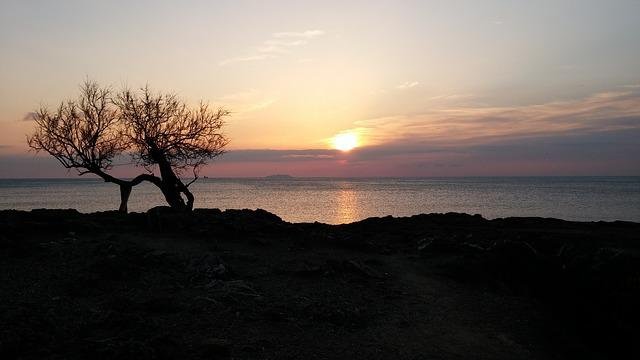“Abraham planted a tamarisk tree in Beersheba,
and there he called on the name of the Lord, the Eternal God.”
(Genesis 21:33, NIV)
According to the Bible, Abraham, the patriarch of the nation of Israel, planted a tamarisk tree to commemorate a treaty that he had forged with the Philistine ruler, Abimelek, who recognized God’s hand of blessing upon Abraham’s life.
Abimelek acknowledged to Abraham, “God is with you in everything you do. Now swear to me here before God that you will not deal falsely with me or my children or my descendants” (Genesis 21:22-23).
Could there be a special significance to the planting of a tamarisk tree in this passage? What is the significance of tamarisk tree in the scripture? What message from God or spiritual lesson can we learn from this biblical reference to a tamarisk tree? Let us see..
The Deeper Reason Abraham Planted a Tamarisk Tree in Beersheba
Before we consider the meaning of the tamarisk tree in the Bible, let me share with you my own experience of planting a tamarisk tree as a commemoration of a significant spiritual milestone.
Over twenty years ago, after my first Sunday sermon, the congregation where I pastor gathered outside on the front lawn of the church to plant a tamarisk tree in celebration of the event and to beseech God’s blessing.
There was also a bronze plaque placed beside the tree which was engraved with the date the tree was planted. The plaque also quoted Psalm 1:1-3 which says: “Blessed is the one who does not walk in step with the wicked or stand in the way that sinners take or sit in the company of mockers, but whose delight is in the law of the Lord, and who meditates on His law day and night. That person is like a tree planted by streams of water, which yields its fruit in season and whose leaf does not wither – whatever they do prospers.” Our hope was that as the tamarisk tree grew it would be a visible image of God’s blessing upon our church.
I believe that Abraham was performing a similar ritual by planting a tamarisk tree at Beersheba which was located on the southern tip of land that God had promised to him and his descendants. In Genesis 12:2-3 it says, “I will make you into a great nation, and I will bless you; I will make your name great, and you will be a blessing. I will bless those who bless you, and whoever curses you I will curse; and all peoples on earth will be blessed through you.”
It appears that the tamarisk tree planted by Abraham was a visible sign of God’s fulfillment of both of these blessings upon the descendants of Israel and all the people of the earth.
Its Significance In The Bible:

Now, Let’s look at some of the reasons why the tamarisk tree was spiritually significant. First, tamarisk trees are often referred to as salt cedars because they are a type of evergreen that produces a salt-like substance on its slender branches. Jesus would later tell His followers, “You are the salt of the earth,” (Matthew 5:13) indicating that they were able to bring spiritual healing to those they encountered who were hurting. In other words, they would be a blessing.
Secondly, in the evenings, as the temperature gets cooler, the salt crystals formed on the branches of the tamarisk tree absorb the moisture that is in the air forming little droplets of water on the branches; and then, when the sun rises and the heat begins to evaporate the water, the water droplets burst open creating a fine mist in the air. These droplets produce a natural form of air conditioning that cools anyone under the shade of the tamarisk. In the same way, Christian believers are called to be a source of spiritual and emotional refreshment to those who are parched and weary from life’s troubles.
The tamarisk tree also produces a honey-like substance that is sweet to the taste. This substance has been referred to as manna because of its similarities to the biblical manna that sustained the Israelites in the dessert over 400 years after Abraham planted this tree. Amazingly, the tamarisk tree grows very slowly and can live several hundred years. While the manna from the tamarisk and the manna from heaven in the wilderness were not the exact same substance, it is possible that Abraham was prophetically proclaiming God’s blessing and provision over his descendants by planting that tree.
Sadly, just a few weeks after we planted that tamarisk tree in front of the church, a strong windstorm blew it over. Since the date upon which the tree was planted was also engraved upon the plaque, I felt it was dishonest to plant a new tree. I also prayed that the fallen tamarisk tree was not an omen of the future, and that God would indeed bless the church. Two decades later, that plaque is conspicuously hidden under a bush in front of the church, while I have been blessed to serve all this time as pastor to a wonderful group of people in a great community.
A few years later, I stood under a massive tree outside of a remote village in the Ivory Coast of Africa. About a dozen people from our group had traversed through the dense foliage down a narrow dirt path to a clearing where the tree stood. The twisted limbs expanded upward above all the other trees, and they made a large aboding canopy that cast dark shadows on the forest floor. The base was so large that it took our entire team with outstretched arms to completely encircle the tree. We had been told that the tree had been cursed by a rival shaman, and thus the entire village was also under the dark spell of its foreboding shadow.
So, we prayed against the tree and for the curse to be lifted. Amazingly, a few weeks after returning from our trip, I received a message that the tree had been struck by lightning and fallen to the ground! The villagers believed that God had heard our prayers and the curse would no longer disturb their lives. Instead of a curse, they would now be blessed.
Was it really possible that a tamarisk tree or any other tree could possess a curse or a blessing? Is tamarisk tree a symbol of god’s blessing?
Tamarisk Tree – A God’s blessing?

The opening chapters of the Bible suggest this very thing when describing the Tree of Life and the Tree of Knowledge of Good and Evil. One tree brought a blessing, while the other brought a curse.
Throughout the Bible, large trees (like tamarisk trees) are also frequently mentioned as geographically significant locations in which people built their homes, established thrones of power, or as places of worship. Judges 9:37 even mentions a “diviners’ tree” where someone engaged in the dark arts may have performed pagan ceremonies to conjure up curses like the tree we encountered in Africa.
Abraham planted that tamarisk tree in Genesis 21 as a symbol of God’s blessing – a metaphorical and literal tree of life. He even calls upon God as El Olam (the Eternal God), the One who can bless us with eternal life. However, the tamarisk tree needed time to grow and develop, possibly several hundred years. Therefore, Abraham was not only commemorating a present peace agreement, but he was looking forward to the future blessings upon himself and Abimelek’s descendants.
Perhaps, we should consider doing the same thing. While you may think about planting a physical tamarisk tree like we attempted to do in front of the church, I am thinking more about planting seeds of blessing into your future and perhaps even beyond your life.
Through your words and actions provide a source of comfort and refreshment to a weary world. Avoid cursing your rivals like that shaman in Africa. Instead, plant seeds of hope into other people’s lives. Enter into agreements of peace with other people so that you will both be blessed.
Abraham may have never seen the tamarisk tree grow to its full maturity, and you may never see the full impact of your life, but you should strive to be the salt of the earth and the manna from heaven.
Dr. Richard Sams is a top Biblical and Religious educator, who holds a Doctor of Ministry degree (Evangelism and Church Growth emphasis) from the Southern Baptist Theological Seminary in Louisville. He has two masters’ degrees (Master of Divinity and Master of the Arts of Religion) from Liberty Baptist Theological Seminary in Lynchburg and also serves on the Pastoral Leadership Advisory Board of Liberty University. Moreover, Richard Sams has been serving as a pastor (Pastoral Ministry) at Calhoun Baptist Church in Calhoun, KY, from the past Nineteen years. He loves practically imparting biblical truths to the next generation, while occasionally conduct spiritual challenges on his facebook page facebook.com/MakeItCountChallenge

